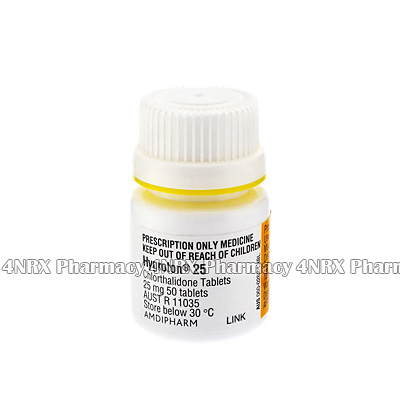 |
Home  Heart Heart  Hygroton (Chlorthalidone) Hygroton (Chlorthalidone) |
|
|||||||||
|
Hygroton (Chlorthalidone)
What is Hygroton (Chlorthalidone) used for? Hygroton (Chlorthalidone) is used to treat the symptoms of high blood pressure, as well as fluid retention (also known as edema). This medication works by increasing the amount of urine the body produces, thereby decreasing the amount of salt and water in the lungs, which in turn helps to prevent breathing problems. It also helps the blood to flow more easily by relaxing the blood vessels. How should I use Hygroton (Chlorthalidone)? Hygroton (Chlorthalidone) is taken orally, either with or without food, once daily in the morning or as otherwise instructed by your physician. As it increases the amount of urine your body makes, patients should take it at least 4 hours before they sleep in order to avoid disturbing their sleep with trips to the toilet. Your physician may need to adjust your dosage in order to ensure that you continue to get the best results from taking this medication. What are the side effects of Hygroton (Chlorthalidone)? Side effects which have been reported by patients taking Hygroton (Chlorthalidone) include nausea, vomiting, and dizziness. If you notice any symptoms indicating dehydration, such as extreme thirst, confusion, or weakness, you should tell your physician straight away. Patients noticing any of the following more serious side effects should consult their physician immediately:
Please Note Strictly follow all instructions provided to you by your physician or pharmacist while using Hygroton (Chlorthalidone). Optimum and safe dosage can differ based on the patient and the condition being treated. As this medication may be unsafe for certain patients, it is essential you always inform your physician if you are pregnant or breastfeeding, as well as if you have any allergies, other illnesses (such as kidney disease, liver disease, gout, and lupus), or other ongoing health conditions, and if you are taking any other form of medication, supplements, or herbal products. Immediately seek emergency medical care if you have an allergic or hypersensitive reaction. Common signs of a reaction include hives, swelling, skin rashes, chest pains, as well as trouble breathing or swallow. 
|
|||||||||||||||||